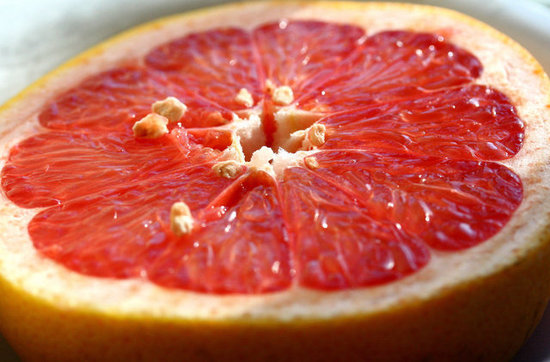 Through the deep and dark months of the winter, there is, surprisingly an amazing fruit that comes into season: citrus! I actually had no idea that citrus are in season in late February to March. I assumed it was a summer fruit like everything else.
Through the deep and dark months of the winter, there is, surprisingly an amazing fruit that comes into season: citrus! I actually had no idea that citrus are in season in late February to March. I assumed it was a summer fruit like everything else.For me, as a kid growing up on an orchard, the summer and fall months were marked by the changing of the fruit. Cherries, then school ended, then strawberries, then pears, then school returned, then apples, then pumpkins, then Halloween. This mattered to us kids for two reasons. First, we survived off of eating fresh fruit, much to the annoyance of the farmer (and his vicious man-eating dog - more on that in another post), and to the disapproval of our parents because they rightfully assumed that eating dozens of fruits in one sitting would probably spoil your dinner. And secondly, picking fruit was our main source of income - there was only one paperoute, and Dylan, the eager entrepreneur who lived 5 doors down from me, had that sweet gig locked up as long as I'd ever known about the route. So what's a kid to do if they wanted to make an honest buck back in the day?
But I digress. Citrus. I never watched citrus season change, because of course in Nova Scotia, you didn't grow citrus. That is, until the other day, when our Grocery Gateway order came in, and they substituted one fruit with a grapefruit.
I'll admit, grapefruit was never my favourite fruit. As a kid, I would sprinkle copious quantities of sugar on top of it, and spoon out the little segments one by one. At the very bottom, once all the segments were removed, I'd pretend it was a bottomless soup bowl, and spoon out the now oversweetened juice, which seemed to magically fill my spoon with liquid every time I pressed it to the bottom of the "bowl". So when I got that Grocery Gateway shipment the other day, I wasn't thrilled. But then I cut open that bad boy.
The flavour is crystal clean. Sour to start, and finishing with a sweet coda. The texture - both crunchy and juicy with little vesicles exploding in your mouth. You get little flecks of bitterness from the white membrane, which is both painful and pleasurable. What you realize is that the fresher it is, the sweeter, juicier, crispier, and citrus-like it is.
My favourite way to prepare them is to skin it. Just lop off the top and the bottom, stand it upright, and then cut off the skin. Once it's naked, I cut it roughly along the natural segments. The fancy way to prepare it would be to, instead of cutting roughly along the segments, cut out the segments, leaving the white membrane in tact. You can do the entire grapefruit, and then at the end, squeeze the juice from the membrane into the bowl. (there's actually a fancy term for this technique, and it's called "supreming" the grapefruit... well well...)
You can also dehydrate them. I have an actual dehydrating machine (not that I'm trying to brag but I sort of am...), but you can just bake it on a rack over a baking sheet at 170F for 6-7 hours. It makes a nice garnish and snack too.
Another thing you can do which I've heard of, but never tried, is to submerge segments in a neutral oil, like canola, stirring until segments break down into individual vesicles (vesicles are the little juice-packed sacs that constitute the grapefruit). I don't know exactly what you would do with this, but I imagine you can use this in salads, or dressings or add it to fancy drinks.
Conclusion: get them now. Season ends in mid-March.
On grapefruits
Grapefruits are actually a natural hybrid of a sweet orange and pomelo. A pomelo is massive citrus, which many westerners, but very popular in asia. Apparently, back long time ago, grapefruits were white in colour, but now, they've been cultivated to be red.
Florida is the world's leading producer of grapefruit (these grapefruits came from there).








